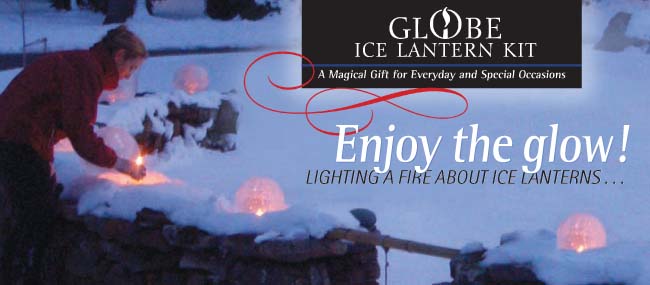Many cold-weather cultures claim the invention of the ice lantern--Finland, Norway, Russia, Germany, China and Japan. The truth is, given their latitudes, they all naturally have traditions surrounding ice as a tool and an art form. The most basic example of this is the boat lantern. To light the way on ancient vessels, ice lanterns were easily created and placed on decks -- to see and be seen. As with most tools that hold symbolic meaning, a broom, a scythe, or a wheel, the ice lantern was
assimilated into the holidays that dealt with the rebirth of the sun. The Winter Solstice is still the center point of joy in a cold climate winter. Great happiness is brought to all by the simplest thing -- a dark winter’s night illuminated by a flame as it plays within a shell of ice.
“A shell of ice” is the simplest definition of an ice lantern. It protects a flame from the elements and then can act as a light source and/or decoration. But if you were to ask a scientist, he or she would say that an ice lantern is a single source of combusting gas in an ascending stream protected by an enclosure of water which has been frozen or reduced to the solid state by cold temperature.
The definition is apt because an ice lantern is all about science. Their creation is based on the chemical properties of water, which is the only chemical substance that humans use in each of its three phases—water, ice and steam.
For our purposes, it is the process of water turning into ice that is the most important. In any given container of water that is put in freezing temperatures, the water begins to freeze when it reaches 32oF. For most ice lantern molds, the outside is in contact with the freezing temperatures, so the water will freeze from the outside in.
Another property of water becoming ice is that pure water freezes first and pushes away impurities. In most molds, that would push the impurities toward the center, away from the cold. Very low temperatures make for a more dramatic effect, because the ice freezes faster, capturing the natural gases as they are dragged by the impurities toward the center.
Simple, yes, but these three properties of water are why we can make a lantern out of water and why they are breathe-takingly beautiful.
Tuesday, November 24, 2009
Subscribe to:
Post Comments (Atom)


No comments:
Post a Comment